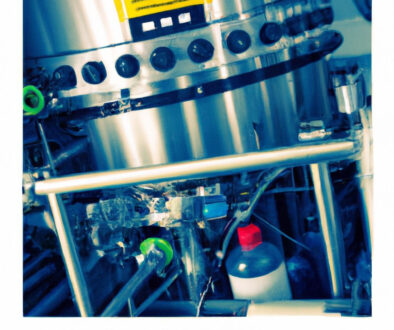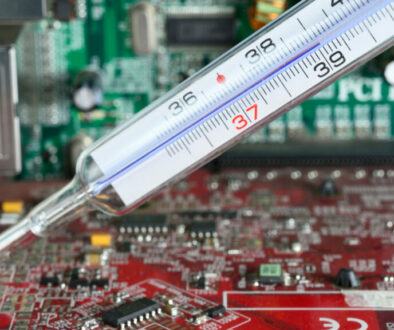How Does A CPAP Machine Work?
What Is a CPAP Machine?
A CPAP machine is a medical device that helps people with sleep apnea breathe more easily during sleep. The machine uses pneumatic components to deliver air pressure through a nasal or full-face mask, which helps keep the airway open and prevents pauses in breathing.
Common pneumatic components used in CPAP machines include proportional flow valves, electronic pressure controllers, regulators, and digital flow meters. Each of these components plays an important role in delivering air pressure to the patient and ensuring that the machine works properly.
Digital flow meters, for example, help to monitor the flow of air and ensure that it is constant. Pressure regulators help to control the amount of pressure that is delivered to the patient, and flow valves help to control the flow of air through the mask.
Without these components, CPAP machines would not be able to function properly and would not be able to provide the same level of relief to patients with sleep apnea.
The Kelly Proportional Valve and Flow Sensor for CPAP Machines
The Kelly Proportional Valve product line can be used very effectively in CPAP devices. By utilizing the accurate flow control of these valves, the level of oxygen applied to the patient is easily maintained by a control system. These proportional valves vary in size and maximum flow rate, meaning both low-volume and high-volume oxygen volumes can be controlled depending on the need of the patient.
Another Kelly product that can be used effectively with CPAP machines is the Digital Mass Flow Sensor. These sensors can be set to read either Air or Oxygen flow rates from 0-300 SLPM. Using two sensors to read air and oxygen in real-time can allow for CPAP control systems to accurately adjust proportional flow rates to maintain the desired oxygen levels for the patients. These sensors come in both Digital and Analog models.
Common Types of CPAP Devices:
The most common type of CPAP device is the Downs Flow Generator, which uses a blower to push air through a one-way valve into a patient’s airway. The valve prevents the air from flowing back out of the patient’s airway, and the blower provides enough pressure to keep the airway open. Some Downs Flow Generators also have an oxygen-conserving feature, which allows patients to breathe in oxygen-enriched air.
Another type of CPAP device is the Continuous-Flow CPAP Generator. Unlike Downs Flow Generators, Continuous-Flow CPAP Generators do not have a one-way valve. Instead, they use a blower to push air continuously through a patient’s airway. Some Continuous-Flow CPAP Generators also have an oxygen-conserving feature.
Some patients may prefer a Portable Demand-Flow CPAP Device, which is small and easy to carry. These devices typically use a battery, making them ideal for use in locations where there is no electricity. Like Downs Flow Generators, Portable Demand-Flow CPAP Devices use a blower to push air through a one-way valve into a patient’s airway.
How Do CPAP Devices Differ?
There are four types of CPAP systems: oxygen-conserving valved CPAP systems, continuous-flow CPAP generators, portable demand-flow CPAP devices, and mechanical ventilators.
Oxygen-conserving valved CPAP systems are designed to deliver oxygen only when the patient is breathing in. The system consists of a flow generator, an oxygen tank, a pressure regulator, and a delivery device (nasal cannula or mask). The flow generator delivers a constant flow of oxygen to the patient.
The pressure regulator controls the pressure of the oxygen delivered to the patient. The delivery device (nasal cannula or mask) delivers the oxygen to the patient. Continuous-flow CPAP generators are like oxygen-conserving valved CPAP systems, but they do not have a pressure regulator.
Why it is important to Know the Different types of CPAP Devices?
In recent years, there has been an explosion of different types of CPAP devices on the market. While this gives patients more choices, it can also be confusing to try to understand the differences between all the different types of devices. In general, there are four main types of CPAP devices: oxygen-conserving valved CPAP systems, continuous-flow CPAP generators, portable demand-flow CPAP devices, and mechanical ventilators. Each type of device has its own advantages and disadvantages, and it is important to understand the differences before choosing a device.
Examples Of Different CPAP Systems:
Oxygen-conserving valved CPAP systems are the most common type of CPAP device. They work by delivering a small amount of air continuously, with occasional pulses of higher air pressure during inhalation. These devices typically have a low rate of air flow and are very quiet. However, they can be difficult to use for patients with high respiratory rates or who need high levels of air pressure.
Oxygen-conserving valved CPAP systems are the most efficient at conserving oxygen, but they can be less comfortable for patients and may not deliver as much air flow. Continuous-flow CPAP generators are more expensive than oxygen-conserving systems, but they provide a constant flow of air and are more comfortable for patients.
Portable demand-flow CPAP devices are the most compact and lightweight option, making them ideal for use in small spaces or on the go. Mechanical ventilators are the most expensive option, but they offer the highest level of support for patients with respiratory problems.
Continuous-flow CPAP generators are like oxygen-conserving valved CPAP systems, but they have a higher rate of air flow. These devices can be used for patients with high respiratory rates or who need high levels of air pressure.



